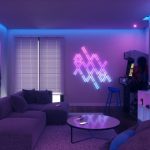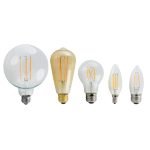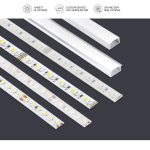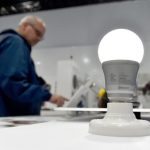Maximize Your Lighting Setup: How Many LED Light Strips Can You Safely Connect Together?
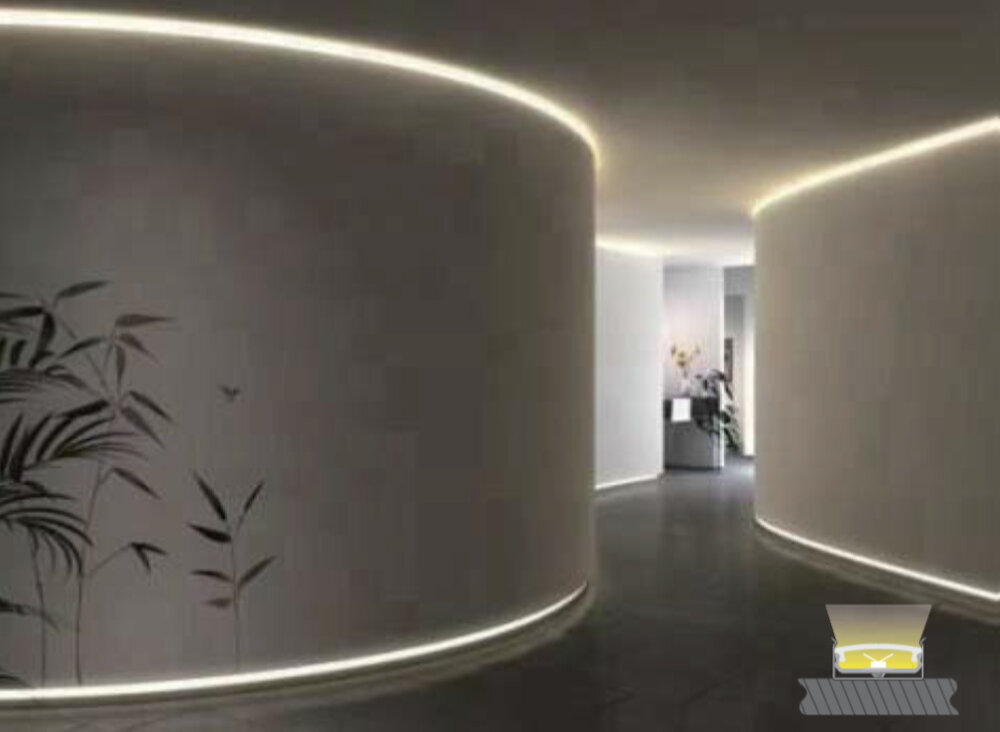
Lighting can make or break the ambiance of any space, and LED light strips have become a popular choice for adding a modern touch to homes, businesses, and events. However, when it comes to connecting multiple LED light strips, there are important factors to consider for both functionality and safety. In this article, we will explore the question of how many LED light strips can be safely connected together and what you need to know to maximize your lighting setup. The answer to this question is not a straightforward one, as it depends on several variables such as the wattage of the LED strips, the voltage of the power supply, and the length of the strip itself. Understanding the technical specifications of your LED light strips and power supply is crucial for determining how many strips can be safely connected together without risking damage to the strips or creating a fire hazard. By following some basic guidelines and taking precautions such as using a larger power supply, you can create a dynamic and safe lighting setup that will enhance any environment.
LED light strips have become increasingly popular due to their energy efficiency, versatility, and ease of use. They are commonly used for accent lighting, task lighting, and decorative purposes. However, proper usage is crucial to ensure both safety and optimal performance. Overloading or connecting too many LED light strips together can lead to overheating, reduced lifespan, and even electrical hazards. It is important to follow manufacturer recommendations for maximum connections and to use appropriate power sources and connectors. By using LED light strips responsibly, users can enjoy their benefits while minimizing potential risks.
In today’s world, lighting is not just a necessity but also a critical aspect of interior design. LED light strips have become increasingly popular in recent years as they offer an easy and affordable way to enhance the aesthetics of a room. However, when it comes to connecting multiple LED light strips, it’s essential to consider safety to avoid any electrical hazards. In this article, we will discuss the maximum number of LED light strips you can safely connect together without causing damage to the strips or the power source. We will also provide some tips on how to maximize your lighting setup while keeping safety a top priority.
Factors to Consider When Connecting LED Light Strips
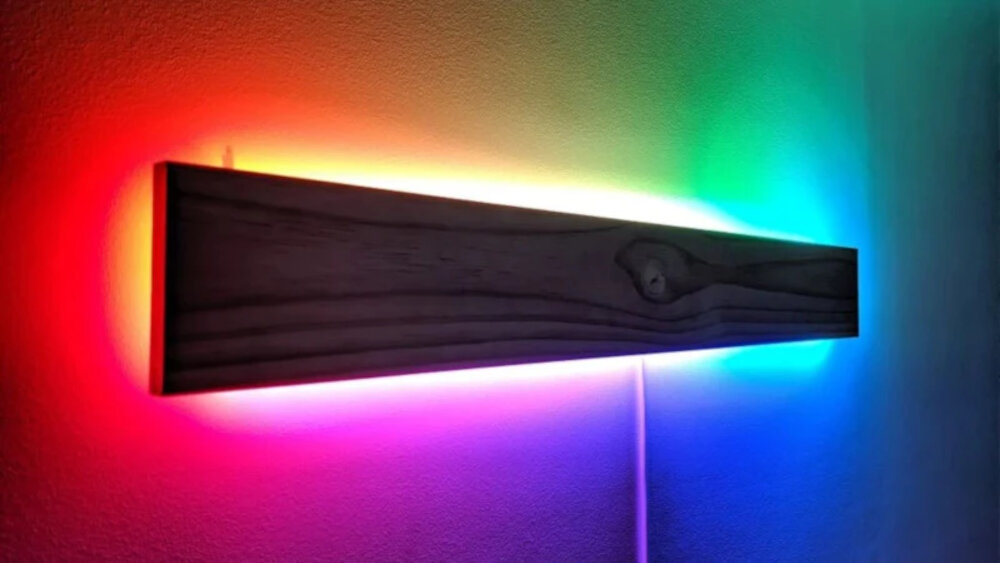
When connecting LED light strips, there are several factors to consider to ensure a safe and efficient setup. First and foremost, it is essential to calculate the total wattage of the LED light strips and compare it to the wattage of the power supply. Overloading the power supply can cause it to overheat and potentially lead to a fire hazard. It is recommended to use a power supply that can handle at least 20% more wattage than the total wattage of the LED light strips. Additionally, it is crucial to use a power supply that matches the voltage of the LED light strips. Connecting a power supply with a higher voltage can cause the LED light strips to burn out, while connecting a lower voltage can result in dim lighting. Another factor to consider when connecting LED light strips is the length and size of the strips. Longer LED light strips require more power to operate, which can cause voltage drop and result in dimming at the end of the strip. To avoid voltage drop, it is recommended to use an amplifier or to divide the LED light strips into shorter sections and connect them in parallel. Additionally, it is necessary to ensure that the LED light strips are not cramped or folded, which can cause damage or overheating. Proper ventilation is also crucial to prevent overheating, and it is recommended to use a heat sink or cooling fan for longer LED light strips or setups with high wattage. By considering these factors, it is possible to maximize your lighting setup and safely connect LED light strips for a bright and efficient lighting solution.
Calculating power requirements and limitations is crucial when it comes to maximizing your lighting setup. Overloading your LED light strips can lead to overheating, which can cause damage to the strips or even start a fire. By knowing the wattage of your LED light strips and the maximum number of strips that can be connected together, you can ensure that you have enough power to light up your space without risking any potential hazards. It is always better to be safe than sorry, so taking the time to calculate power requirements and limitations is a necessary step in creating a safe and effective lighting setup.
Voltage and current are two important electrical parameters that affect LED strip connections. Voltage is the measure of the electrical potential difference between two points in a circuit, and it is expressed in volts. On the other hand, current is the measure of the flow of electrical charge through a circuit, and it is expressed in amperes. In LED strip connections, voltage determines the brightness of the LED strip, while current determines the power consumption of the LED strip. Therefore, it is important to ensure that the voltage and current rating of the LED strip is matched with the power supply, and that the total current draw of the LED strips connected does not exceed the capacity of the power supply to avoid overheating and potentially damaging the LED strips.
LED light strips come in various types, each with its own specifications, making it necessary to choose the right one for your lighting needs. Some of the most common types include the RGB LED strips, which are capable of producing millions of colors by combining red, green, and blue lights. They usually require a voltage of 12V or 24V and come with adhesive tape for easy installation. Another popular type is the single-color LED strip, capable of emitting a single color, such as white, warm white, or cool white. They usually require a voltage of 12V or 24V and come with varying levels of brightness. Other types include the digital LED strip, which can be programmed to display various patterns and colors, and the waterproof LED strip, which is suitable for outdoor use and can withstand water and other elements. Choosing the right LED strip type can help you achieve the desired lighting effect while ensuring safety and efficiency.
How Many LED Light Strips Can You Safely Connect Together?
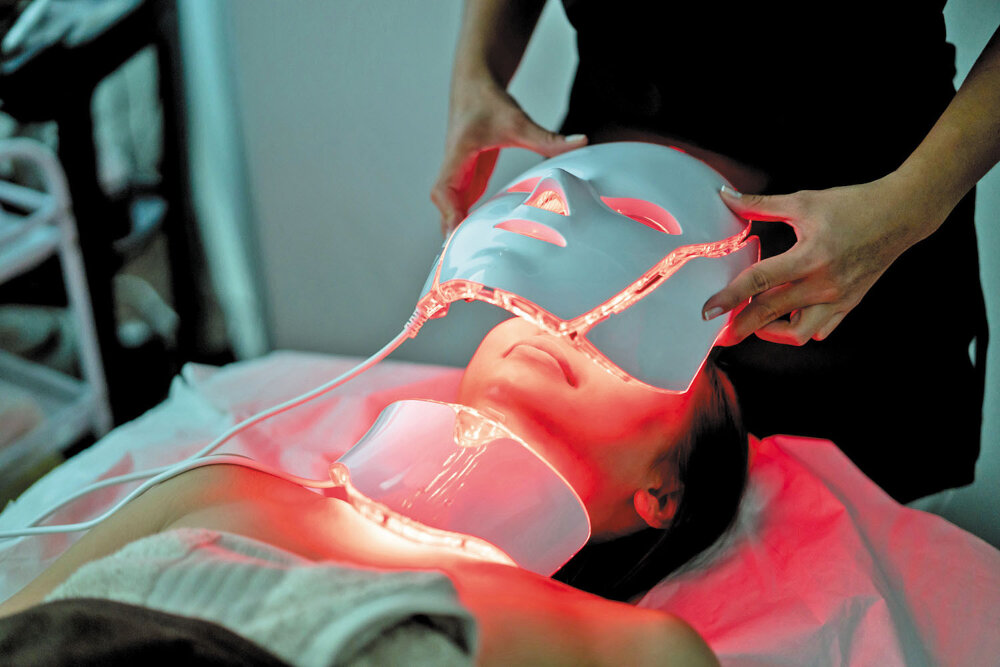
When it comes to connecting LED light strips, it’s crucial to understand the limitations and guidelines to ensure safety and optimal performance. The number of LED light strips that can be connected safely depends on various factors, including the voltage of the strips, the power supply capacity, and the wiring setup. In general, it’s recommended to connect no more than three or four LED light strips together to avoid overloading the power supply or causing voltage drops. If you need to connect more strips, you should use an amplifier or repeater to boost the signal and prevent voltage drops. Overloading the power supply can cause the LED light strips to flicker or burn out, which can be dangerous and costly. Another factor to consider when connecting LED light strips is the wiring setup. Parallel wiring is the preferred method as it ensures even power distribution and reduces the risk of voltage drops. In parallel wiring, each strip is connected directly to the power supply, which also makes it easier to replace or adjust individual strips. Series wiring, on the other hand, involves connecting the strips end to end, which can lead to uneven brightness and voltage drops. If you must use series wiring, you should use a voltage regulator to ensure stable voltage and current flow. In summary, the key to safely connecting LED light strips is to follow the manufacturer’s guidelines, consider the voltage and power supply capacity, and use the appropriate wiring setup.
To determine the safe LED strip connections, the first step is to identify the power rating of each LED strip and the power supply. Then, calculate the total wattage of each strip by multiplying the voltage and current rating. Next, add the wattage of each strip to find the total wattage. The total wattage should not exceed the wattage capacity of the power supply. To calculate the current, divide the total wattage by the voltage rating. Check the current rating of the power supply and ensure that it is greater than the total current drawn by the LED strips. Finally, consider the length of the LED strips and the wire gauge used for the connections. Use thicker wire for longer strips and ensure that the wire can handle the current rating. By following these steps, you can ensure safe and efficient LED strip connections.
When it comes to LED strip connections, there are several tips to keep in mind in order to maximize their performance while avoiding safety hazards. First, ensure that the power supply you are using is compatible with the LED strip lights you are connecting. It is also important to not exceed the maximum wattage capacity of your power supply. Use a connector that is specifically designed for LED strips, and make sure to properly connect and secure the wires. Avoid overloading the circuit by not connecting too many strips together, and be sure to use an appropriate gauge wire for the length of the strip run. Additionally, be cautious of where you are placing the LED strips and ensure that they are not in direct contact with any flammable materials. By following these tips, you can safely and effectively maximize your LED lighting setup.
The importance of using a power supply with appropriate specifications cannot be overstated when it comes to maximizing your lighting setup. LED light strips require a specific voltage and current to operate efficiently and safely, and a power supply that does not meet these specifications can lead to a variety of problems, such as flickering lights, reduced brightness, and even damage to the LED strips themselves. Additionally, using a power supply with higher specifications than needed can also lead to problems, such as overheating and reduced lifespan of the LEDs. Therefore, it is crucial to carefully consider the specifications of your power supply and ensure that they are appropriate for your specific LED light strip setup.
Common Mistakes to Avoid
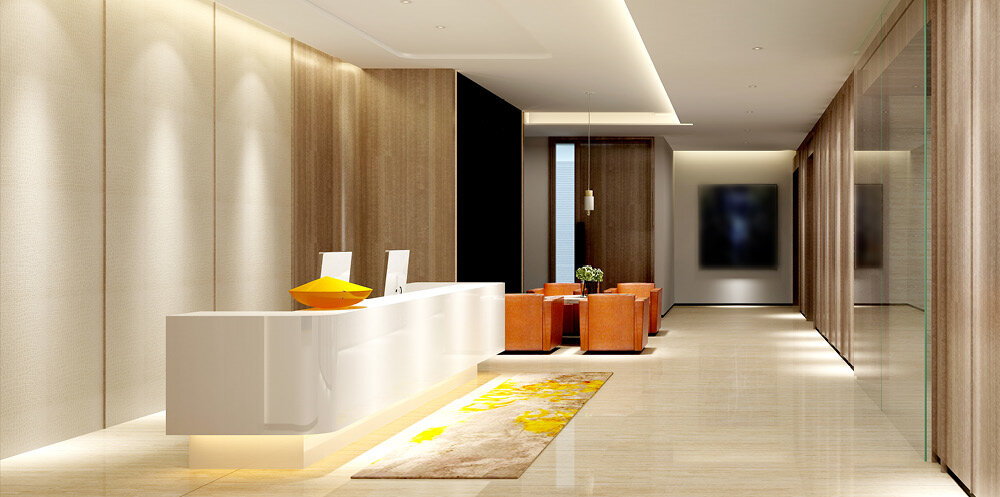
When it comes to setting up your LED light strips, there are a few common mistakes that you should avoid. First and foremost, it’s important to understand the power limitations of your LED lights. Overloading your circuit with too many LED strips can cause overheating, which can be dangerous and potentially lead to a fire hazard. To avoid this, make sure to read the manufacturer’s instructions and follow the recommended guidelines for how many LED light strips can be safely connected together. It’s also important to pay attention to the voltage of your LED lights and make sure that you’re using a compatible power source. Another common mistake when setting up LED light strips is failing to properly secure them. While LED strips are flexible and can be easily bent and shaped, it’s important to make sure that they are securely fastened in place. This will not only help prevent the strips from falling down or coming loose, but it will also ensure that the lights are positioned correctly and shining in the right direction. Additionally, failing to secure your LED light strips can also make it difficult to add or remove strips if you need to make adjustments to your lighting setup in the future. To avoid this, make sure to use adhesive clips or mounting brackets to keep your LED light strips securely in place.
When it comes to connecting LED light strips, there are a few common mistakes that people tend to make. One of the biggest mistakes is failing to consider the wattage of the strips and the power supply being used. It’s important to ensure that the power supply can handle the total wattage of all the strips being connected. Another mistake is ignoring the voltage requirements of the LED strips. Mixing strips with different voltages can result in uneven brightness and color. Additionally, people often overlook the importance of using the correct connectors and wiring, which can lead to poor connectivity and potential safety hazards. To avoid these mistakes, it’s important to carefully read the manufacturer’s instructions and seek the advice of a professional if needed.
Improper connections of LED light strips can pose significant risks to both the equipment and people. Connecting too many LED strips together can overload the power supply, leading to overheating or even electrical fires. Additionally, poorly connected wires or unsecured connections can create short circuits or other electrical hazards. It is crucial to ensure that all connections are properly secured and that the power supply is appropriate for the number of LED light strips being used. Failure to take these precautions can result in damage to the equipment, injury to people, or even fatal accidents. Therefore, it is essential to follow the manufacturer’s instructions and safety guidelines when connecting LED light strips.
To avoid mistakes and ensure safe usage when connecting LED light strips together, it is essential to follow the manufacturer’s instructions and guidelines. One solution is to use an appropriate LED driver that matches the voltage and wattage requirements of the light strips. Additionally, avoid exceeding the maximum number of light strips that can be connected in series, as this can cause overloading and overheating. Other solutions include using high-quality connectors and cables, ensuring proper insulation and grounding, and properly securing and mounting the LED light strips. Regular maintenance and inspection can also help prevent any potential hazards and ensure optimal performance and longevity of the lighting setup.
In the article \Maximize Your Lighting Setup: How Many LED Light Strips Can You Safely Connect Together,\ the author discusses the importance of understanding the maximum number of LED light strips that can be connected together. They explain that exceeding the recommended maximum number of LED strips connected can lead to issues with voltage drop, which can cause the lights to flicker or not work properly. The article also explains that the maximum number of strips that can be connected depends on the power supply used, the length and type of the LED strips, and the wiring used. The author recommends consulting the manufacturer’s instructions and specifications to determine the maximum number of LED strips that can be safely connected together.
It cannot be overstated how crucial it is to use LED light strips properly to not only maximize their lifespan but also avoid potential safety hazards. Firstly, overloading the strips with too many connections can lead to overheating and potentially cause a fire. Secondly, using the appropriate power supply and ensuring it matches the voltage and wattage requirements of the LED light strip is essential. Additionally, it’s crucial to avoid bending or twisting the strips too much as it can damage the circuit board and reduce the lifespan of the lights. Proper usage and installation of LED light strips are critical to ensure a safe and long-lasting lighting setup.
Conclusion
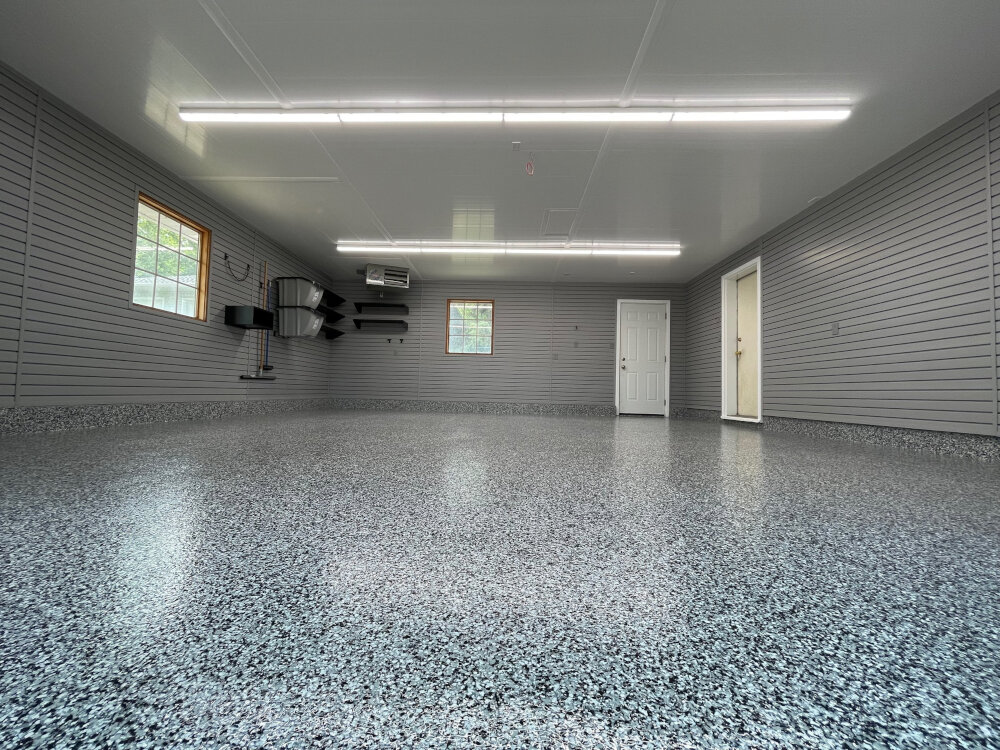
In conclusion, optimizing your lighting setup with LED light strips can enhance the ambiance of any space. However, it is crucial to consider the safety guidelines when connecting multiple LED light strips together. By understanding the voltage and wattage limitations of your power source and the LED light strips, you can create a safe and efficient lighting setup without risking any electrical hazards. Remember to always follow the manufacturer’s recommendations and consult with a professional if necessary. With the right knowledge and precautions, you can maximize your lighting setup and transform your space into a stunning visual experience.

